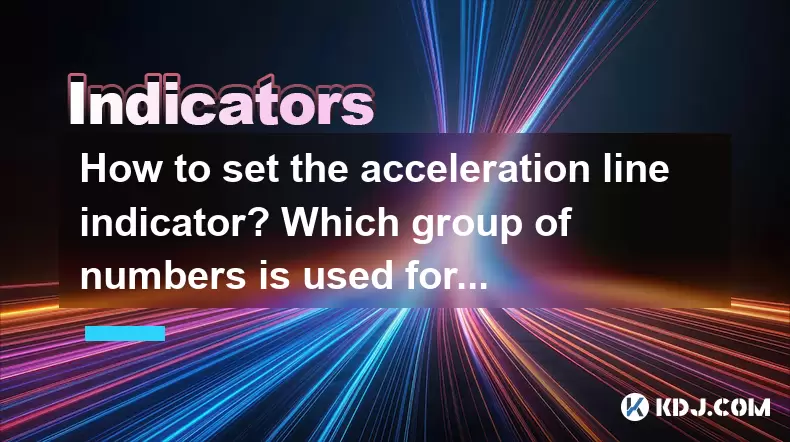-
 Bitcoin
Bitcoin $118000
-1.29% -
 Ethereum
Ethereum $3758
-3.52% -
 XRP
XRP $3.113
-5.04% -
 Tether USDt
Tether USDt $0.9998
-0.05% -
 BNB
BNB $818.5
-3.23% -
 Solana
Solana $181.9
-5.10% -
 USDC
USDC $0.9997
-0.04% -
 Dogecoin
Dogecoin $0.2239
-8.33% -
 TRON
TRON $0.3233
0.95% -
 Cardano
Cardano $0.7842
-6.81% -
 Hyperliquid
Hyperliquid $43.35
-2.12% -
 Sui
Sui $3.894
-9.97% -
 Stellar
Stellar $0.4176
-6.99% -
 Chainlink
Chainlink $17.97
-6.68% -
 Bitcoin Cash
Bitcoin Cash $576.7
-2.30% -
 Hedera
Hedera $0.2671
-7.23% -
 Avalanche
Avalanche $24.64
-6.12% -
 UNUS SED LEO
UNUS SED LEO $8.972
0.08% -
 Litecoin
Litecoin $108.1
-6.55% -
 Toncoin
Toncoin $3.198
-5.94% -
 Shiba Inu
Shiba Inu $0.00001325
-6.80% -
 Ethena USDe
Ethena USDe $1.001
-0.04% -
 Uniswap
Uniswap $10.27
-7.02% -
 Polkadot
Polkadot $3.935
-7.49% -
 Monero
Monero $317.7
-2.24% -
 Dai
Dai $0.9999
0.00% -
 Bitget Token
Bitget Token $4.550
-3.85% -
 Pepe
Pepe $0.00001179
-8.68% -
 Cronos
Cronos $0.1418
-2.34% -
 Aave
Aave $286.2
-6.49%
How to set the acceleration line indicator? Which group of numbers is used for short-term trading?
The AC indicator, developed by Bill Williams, measures market momentum using 5 and 34-period SMAs, aiding short-term traders in identifying potential trends and entry points.
Jun 10, 2025 at 02:07 am

The acceleration line indicator, commonly known as the Acceleration/Deceleration (AC) indicator, is a technical analysis tool developed by Bill Williams. This indicator helps traders identify the momentum behind price movements, making it an essential tool for short-term trading strategies. In this article, we will explore how to set up the AC indicator and discuss the optimal group of numbers for short-term trading.
Understanding the Acceleration/Deceleration Indicator
The Acceleration/Deceleration (AC) indicator measures the acceleration and deceleration of market momentum. It is based on the difference between the 5-period simple moving average (SMA) of the median price and a 34-period SMA of the median price, which is then smoothed by a 5-period SMA. The formula can be expressed as:
[ AC = AO - SMA(AO, 5) ]
Where AO (Awesome Oscillator) is calculated as:
[ AO = SMA(Median Price, 5) - SMA(Median Price, 34) ]
The median price is the average of the high and low prices for a given period. This indicator helps traders identify whether the market's driving force is increasing or decreasing.
Setting Up the Acceleration/Deceleration Indicator
To set up the AC indicator on your trading platform, follow these steps:
- Open your trading platform: Ensure you are using a platform that supports the AC indicator, such as MetaTrader 4 or 5.
- Navigate to the indicators menu: This is typically found under the "Insert" or "Indicators" tab.
- Select the AC indicator: Look for the "Bill Williams" section and choose the "Acceleration/Deceleration" indicator.
- Apply the indicator to your chart: Once selected, the indicator will be added to your chart with default settings.
If you need to adjust the settings, you can do so by:
- Right-clicking on the indicator and selecting "Properties."
- Adjusting the period settings: The default settings are 5 and 34 periods for the SMAs. You can modify these if needed, but for most traders, the default settings are sufficient.
Using the AC Indicator for Short-Term Trading
The AC indicator is particularly useful for short-term trading because it provides insights into the immediate momentum of the market. Here’s how to interpret the AC indicator for short-term trading:
- Positive values: When the AC line is above zero, it indicates that the market's driving force is increasing, suggesting a potential bullish trend.
- Negative values: When the AC line is below zero, it indicates that the market's driving force is decreasing, suggesting a potential bearish trend.
- Zero line crossovers: Crossovers above or below the zero line can signal potential entry or exit points for trades.
Optimal Group of Numbers for Short-Term Trading
For short-term trading, the default settings of the AC indicator are generally optimal. However, some traders may prefer to fine-tune the settings based on their specific trading style. The most commonly used group of numbers for short-term trading with the AC indicator are:
- 5-period SMA: This is the short-term moving average used in the calculation of the AO.
- 34-period SMA: This is the long-term moving average used in the calculation of the AO.
- 5-period SMA smoothing: This smooths the AO to create the AC indicator.
These settings are widely used because they provide a good balance between sensitivity to price movements and the smoothing needed to reduce false signals.
Practical Example of Using the AC Indicator
To illustrate how the AC indicator can be used in short-term trading, consider the following example:
- Identify a potential trend: Look for the AC line to cross above the zero line, indicating increasing market momentum.
- Confirm with price action: Ensure that the price action supports the signal from the AC indicator. For instance, if the AC line crosses above zero and the price is making higher highs, it may be a good time to enter a long position.
- Set stop-loss and take-profit levels: Based on your risk management strategy, set appropriate stop-loss and take-profit levels.
- Monitor the trade: Keep an eye on the AC indicator and price action to decide when to exit the trade. If the AC line crosses back below zero, it may be time to consider closing the position.
Combining the AC Indicator with Other Tools
While the AC indicator is powerful on its own, it can be even more effective when combined with other technical analysis tools. Here are some common combinations:
- Moving Averages: Use moving averages to confirm trends identified by the AC indicator. For example, if the AC line is positive and the price is above a key moving average, it strengthens the bullish signal.
- Relative Strength Index (RSI): The RSI can help confirm overbought or oversold conditions indicated by the AC indicator. If the AC line is negative and the RSI is below 30, it may indicate a strong bearish momentum.
- Volume Indicators: Volume can confirm the strength of the momentum indicated by the AC. High volume during a positive AC reading can confirm a strong bullish trend.
Frequently Asked Questions
Q: Can the AC indicator be used for long-term trading?
A: While the AC indicator is primarily used for short-term trading due to its sensitivity to price movements, it can be adapted for longer-term trading by adjusting the period settings. For instance, increasing the periods used in the SMAs can make the indicator less sensitive and more suitable for longer-term analysis.
Q: How does the AC indicator differ from the Awesome Oscillator?
A: The AC indicator is derived from the Awesome Oscillator (AO). The AO measures the difference between a 5-period SMA and a 34-period SMA of the median price. The AC indicator then takes the AO and smooths it with another 5-period SMA. The main difference is that the AC provides a more smoothed version of the AO, helping to filter out short-term noise.
Q: Is the AC indicator effective in all market conditions?
A: The effectiveness of the AC indicator can vary depending on market conditions. In trending markets, the AC indicator can be very effective in identifying the strength of the trend. However, in ranging or choppy markets, the indicator may produce more false signals due to its sensitivity to price movements. Combining the AC indicator with other tools can help improve its reliability across different market conditions.
Q: Can the AC indicator be used for cryptocurrency trading?
A: Yes, the AC indicator can be effectively used for trading cryptocurrencies. Given the high volatility and rapid price movements in the crypto market, the AC indicator can help traders identify short-term momentum shifts and potential entry or exit points. Ensure your trading platform supports the AC indicator and apply it to your cryptocurrency charts following the steps outlined earlier.
Disclaimer:info@kdj.com
The information provided is not trading advice. kdj.com does not assume any responsibility for any investments made based on the information provided in this article. Cryptocurrencies are highly volatile and it is highly recommended that you invest with caution after thorough research!
If you believe that the content used on this website infringes your copyright, please contact us immediately (info@kdj.com) and we will delete it promptly.
- Bitcoin, Remittix Presale, and DeFi Remittance: A New Yorker's Take
- 2025-07-29 14:30:12
- Bitcoin Price Stagnation: Is the Cryptocurrency Market at a Crossroads?
- 2025-07-29 12:30:12
- Coinbase Eyes India: Acquisition of CoinDCX on the Horizon?
- 2025-07-29 12:30:12
- Cryptocurrency, Treasuries, and Companies: A New Era?
- 2025-07-29 12:50:12
- Zhipu AI's GLM-4.5: China's Open-Source Challenger to GPT-4
- 2025-07-29 12:50:12
- Meme Coins Gone Viral: Presales, Trolling Cats, and the Future of Crypto Hype
- 2025-07-29 14:30:12
Related knowledge

What does it mean when the EMA combination crosses upward for the first time after sideways trading?
Jul 28,2025 at 03:43pm
Understanding the EMA and Its Role in Technical AnalysisThe Exponential Moving Average (EMA) is a widely used technical indicator in cryptocurrency tr...

What signal does the ROC send when it rises rapidly from a low level and breaks through the zero axis?
Jul 27,2025 at 10:15am
Understanding the Rate of Change (ROC) IndicatorThe Rate of Change (ROC) is a momentum-based oscillator used in technical analysis to measure the perc...

What does it mean when TEMA breaks through the long-term downward trend line?
Jul 29,2025 at 02:50pm
Understanding the Role of Smart Contracts in Decentralized Finance (DeFi)Smart contracts are self-executing agreements with the terms of the agreement...

What does it mean when the price breaks through the double bottom neckline and the moving averages are arranged in a bullish pattern?
Jul 28,2025 at 10:57am
Understanding the Double Bottom PatternThe double bottom is a widely recognized reversal chart pattern in technical analysis, particularly within the ...

What signal does the DMA fast line cross the slow line above the zero axis?
Jul 28,2025 at 05:42am
Understanding the DMA Indicator and Its ComponentsThe DMA (Difference of Moving Averages) indicator is a technical analysis tool used in cryptocurrenc...

What does it mean that the rebound is blocked after the moving average is arranged in a short position for the first time?
Jul 26,2025 at 10:51am
Understanding the Short-Term Moving Average ConfigurationWhen traders refer to a 'short position arrangement' in moving averages, they are describing ...

What does it mean when the EMA combination crosses upward for the first time after sideways trading?
Jul 28,2025 at 03:43pm
Understanding the EMA and Its Role in Technical AnalysisThe Exponential Moving Average (EMA) is a widely used technical indicator in cryptocurrency tr...

What signal does the ROC send when it rises rapidly from a low level and breaks through the zero axis?
Jul 27,2025 at 10:15am
Understanding the Rate of Change (ROC) IndicatorThe Rate of Change (ROC) is a momentum-based oscillator used in technical analysis to measure the perc...

What does it mean when TEMA breaks through the long-term downward trend line?
Jul 29,2025 at 02:50pm
Understanding the Role of Smart Contracts in Decentralized Finance (DeFi)Smart contracts are self-executing agreements with the terms of the agreement...

What does it mean when the price breaks through the double bottom neckline and the moving averages are arranged in a bullish pattern?
Jul 28,2025 at 10:57am
Understanding the Double Bottom PatternThe double bottom is a widely recognized reversal chart pattern in technical analysis, particularly within the ...

What signal does the DMA fast line cross the slow line above the zero axis?
Jul 28,2025 at 05:42am
Understanding the DMA Indicator and Its ComponentsThe DMA (Difference of Moving Averages) indicator is a technical analysis tool used in cryptocurrenc...

What does it mean that the rebound is blocked after the moving average is arranged in a short position for the first time?
Jul 26,2025 at 10:51am
Understanding the Short-Term Moving Average ConfigurationWhen traders refer to a 'short position arrangement' in moving averages, they are describing ...
See all articles

























































































